Baby rabbits, also known as kits, have specific dietary needs to ensure they grow healthy and strong. Their early nutrition is critical to their survival, whether they are wild rabbits or domestic ones. In this article, we’ll dive into what do baby rabbits eat at different stages of life, how to care for orphaned kits, and the best foods to introduce to them when they start weaning.
What Are Baby Rabbits Called?
Quick Fact:
Kits nurse for 4-6 weeks before they are weaned off milk.
Understanding the Diet of Baby Rabbits
Why Diet Matters for Baby Rabbits
The diet of a baby rabbit can make or break its chances of survival, especially during the early stages. A balanced, nutrient-rich diet provides the necessary energy for growth and helps build a strong immune system. For domestic rabbits, an inappropriate diet can lead to digestive issues, stunted growth, or even early mortality.
According to the Rabbit Welfare Association & Fund (RWAF), baby rabbits rely on their mother’s milk for essential nutrients during the first few weeks of life. Veterinary experts recommend avoiding sudden changes to a baby rabbit’s diet to prevent digestive issues.
What Do Baby Rabbits Eat in the Wild?
The Role of Mother’s Milk
In the wild, baby rabbits rely heavily on their mother’s milk for the first few weeks of life. Rabbit milk is exceptionally nutrient-dense, providing essential fats, proteins, and antibodies that baby rabbits need to thrive. Kits typically nurse once or twice a day, and this small feeding schedule is enough due to the richness of the milk. This will also answer your question what do wild baby rabbits eat?
As advised by Dr. Jane Smith, a wildlife veterinarian, “Rabbit milk contains high levels of fat and protein to support rapid growth. Without adequate milk, young rabbits will fail to thrive.”
Transition to Solid Foods
Around 2-3 weeks of age, wild rabbits start nibbling on solid foods such as grasses and leafy plants. They gradually become more independent, though they may still nurse until they are fully weaned, usually by 4-6 weeks.
What Do Baby Rabbits Eat in Captivity?
Importance of Proper Diet for Domestic Kits
In captivity, baby rabbits also start on their mother’s milk, but it’s essential to provide the right environment and diet as they begin to wean. Domestic baby rabbits may require extra care, especially if they are orphans or separated from their mothers early on.
“Always make sure that domestic kits have access to appropriate solid foods and unlimited fresh hay during their weaning process,” advises Dr. Hanry, a rabbit care expert.
Nursing Baby Rabbits
How Long Do Baby Rabbits Need Their Mother’s Milk?
For both wild and domestic rabbits, baby rabbits should be nursed by their mother until they are about 4-6 weeks old. The milk provides them with the necessary nutrients to grow during this critical stage. In cases where the mother cannot nurse or the kits are orphaned, alternative feeding methods are required.
Quick Fact:
Baby rabbits start nibbling on solid food at about 3 weeks but should still rely on milk until fully weaned.
Orphaned Baby Rabbits: What to Feed Them?
Using Kitten Milk Replacer (KMR)
For orphaned baby rabbits, kitten milk replacer (KMR) is often recommended as a substitute for rabbit milk. It is important to use the correct ratio of water to KMR to ensure the baby rabbit is getting enough nutrients. Avoid using cow’s milk, as it can upset the rabbit’s digestive system.
“Veterinary professionals recommend using Kitten Milk Replacer (KMR) for orphaned rabbits because it closely mimics rabbit milk. As advised by Dr. Josh, a small animal veterinarian, ‘KMR should be diluted properly and given slowly to avoid complications.’”
How to Feed Orphaned Kits
Feeding orphaned rabbits can be a delicate process. Use a small syringe or dropper to feed them, and do so slowly to prevent choking. Feed the kits only a few milliliters at a time, gradually increasing as they grow.
Introducing Solid Foods to Baby Rabbits
When to Start Solid Foods
Baby rabbits can start exploring solid foods at about 3 weeks of age. However, this is just the beginning of the weaning process, and milk should still be their primary source of nutrition until they are fully weaned.
According to experts, “Introducing hay and leafy greens slowly helps avoid digestive upsets. Opt for soft leafy greens like dandelion leaves or alfalfa hay initially.”
Best First Foods for Baby Rabbits
The first foods baby rabbits should eat include soft grasses, leafy greens, and small amounts of hay. Pellets designed for young rabbits can also be introduced, but they should be high in fiber and free from added sugars.
At What Age Can Rabbits Eat Grass?
What to Feed Newborn Bunnies? Rabbits can start nibbling on grass from around 3 weeks old. However, it’s important to introduce grass gradually and ensure it is free from pesticides and chemicals. Fresh, untreated grass can provide excellent nutrients, but it should complement their diet of hay and mother’s milk during the weaning phase.
Can Baby Rabbits Drink Water?
Yes, baby rabbits can start drinking water once they begin eating solid foods, typically around 3-4 weeks old. Fresh water should always be available to ensure they stay hydrated, especially during the weaning process when their reliance on milk decreases.
How Much Dry Food Should Baby Rabbits Eat?
Baby rabbits should eat small amounts of high-fiber pellets specifically designed for young rabbits. At around 3 weeks old, they can be introduced to dry food, but it should never replace hay and leafy greens as the primary sources of nutrients. A good guideline is about 1/8 cup of pellets per day for young rabbits, gradually increasing as they grow.
Veterinary experts recommend that “pellets be fed sparingly and not make up the majority of a rabbit’s diet, as excess dry food can lead to obesity.”
What Not to Feed Baby Rabbits
Foods That Can Be Harmful
Certain foods can be dangerous for baby rabbits. Avoid giving them foods like iceberg lettuce, processed foods, and anything high in sugar. These can cause digestive problems and could even be fatal.
According to the Rabbit Welfare Association, “Iceberg lettuce contains lactucarium, which can be harmful to rabbits, leading to digestive issues and diarrhea.”
Hydration Needs of Baby Rabbits
Water and Milk Balance
While baby rabbits are primarily sustained by their mother’s milk, hydration is still crucial. As they begin to eat solid foods, ensure they always have access to fresh, clean water. Dehydration can be a serious issue for young rabbits, especially during weaning.
The Importance of Hay in a Baby Rabbit’s Diet
When to Introduce Hay
Hay is a staple in a rabbit’s diet and should be introduced early. Around 3-4 weeks, baby rabbits can begin to nibble on hay. Not only is hay good for their digestion, but it also helps wear down their growing teeth.
Experts suggest that “alfalfa hay is highly beneficial for young rabbits because it contains increased levels of protein and calcium.”
Digestive Health for Baby Rabbits
Recognizing Digestive Issues
Baby rabbits have delicate digestive systems, and any sudden changes in diet can lead to issues like diarrhea or bloating. Monitor their stools closely, and ensure they are eating a fiber-rich diet to maintain good gut health.
When to Wean Baby Rabbits
Weaning typically begins at 4 weeks, when baby rabbits start to eat more solid food and rely less on milk. By 6-8 weeks, they should be fully weaned. Gradually decrease the amount of milk they receive and replace it with solid food to make the transition smooth.
Common Mistakes in Feeding Baby Rabbits
Overfeeding, giving the wrong types of food, or introducing solid foods too early are some common mistakes when it comes to feeding baby rabbits. It’s essential to follow a balanced diet plan and avoid foods that could harm their delicate systems.
Monitoring the Growth and Health of Baby Rabbits
Food for growth
How to Tell if a Baby Rabbit is Underfed
A healthy baby rabbit will have a rounded belly and show signs of steady growth. If a kit looks lethargic, thin, or has a wrinkled belly, it may not be getting enough nutrients. Regularly weigh the rabbits to track their growth.
Conclusion
Caring for baby rabbits involves careful attention to their diet, especially during the first few weeks of life. Whether nursing or transitioning to solid foods, providing the right nutrients is crucial for their health and development. By following the guidelines outlined in this article, you can ensure that your baby rabbits grow up healthy and happy.
Disclaimer:
While this article provides general care guidelines, always consult a veterinarian for the specific needs of your rabbit, especially if they are showing signs of illness or distress.
FAQs
-
- What do baby cottontail rabbits eat?
Baby cottontail rabbits primarily consume their mother’s milk for the first few weeks and start nibbling on grasses and leafy plants around 3 weeks old. - What can I feed a baby bunny?
You can feed a baby bunny kitten milk replacer (KMR) if orphaned, and introduce alfalfa hay and pellets designed for young rabbits around 3-4 weeks. - How long can baby bunnies survive without their mother?
Without their mother, baby bunnies can survive for about 24-48 hours, depending on age and overall health. - Do baby bunnies drink water?
Yes, baby bunnies begin drinking water once they start eating solid foods, typically around 3-4 weeks old. - Can baby rabbits eat carrots?
Carrots are high in sugar, so they should only be given sparingly and never to very young rabbits.
- What do baby cottontail rabbits eat?

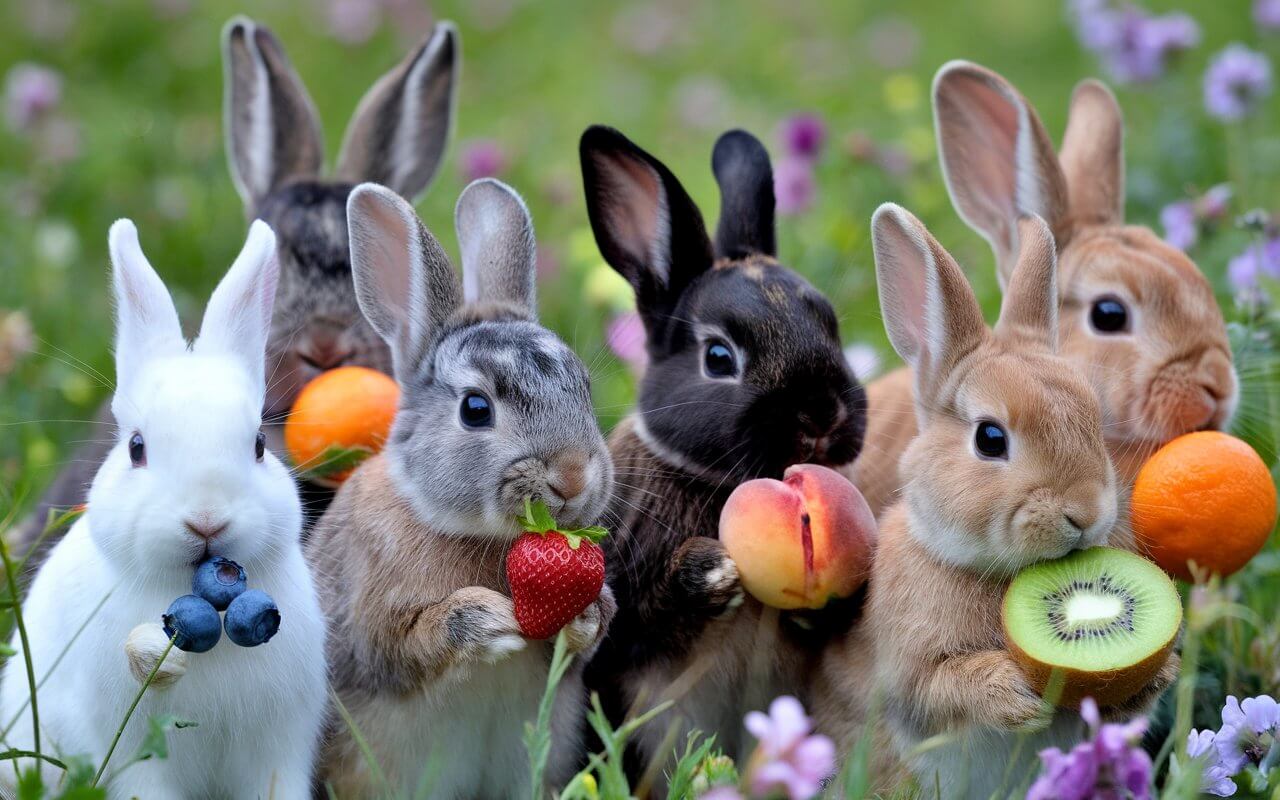
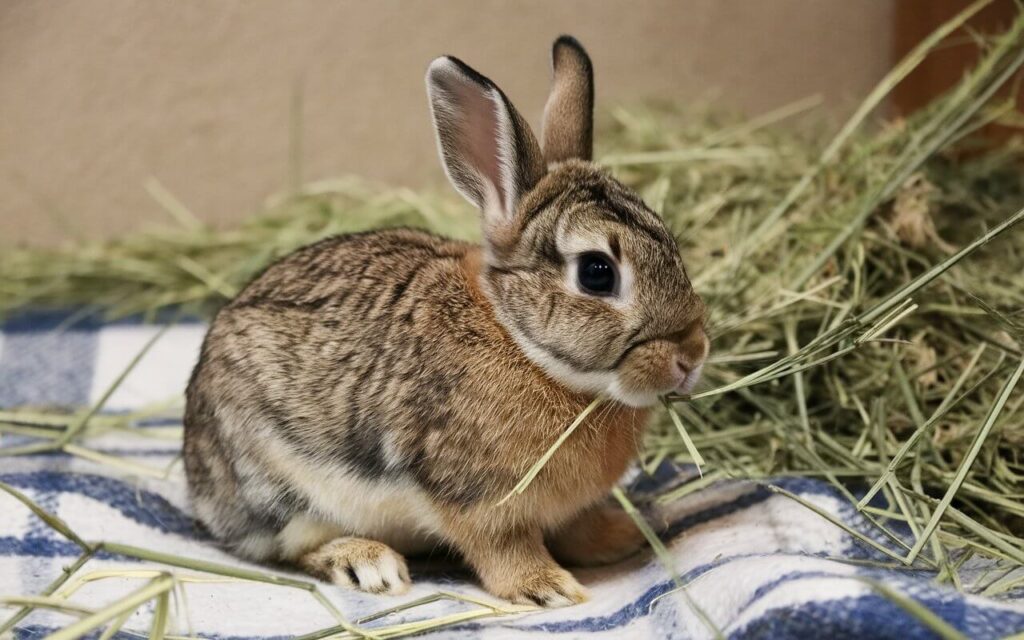

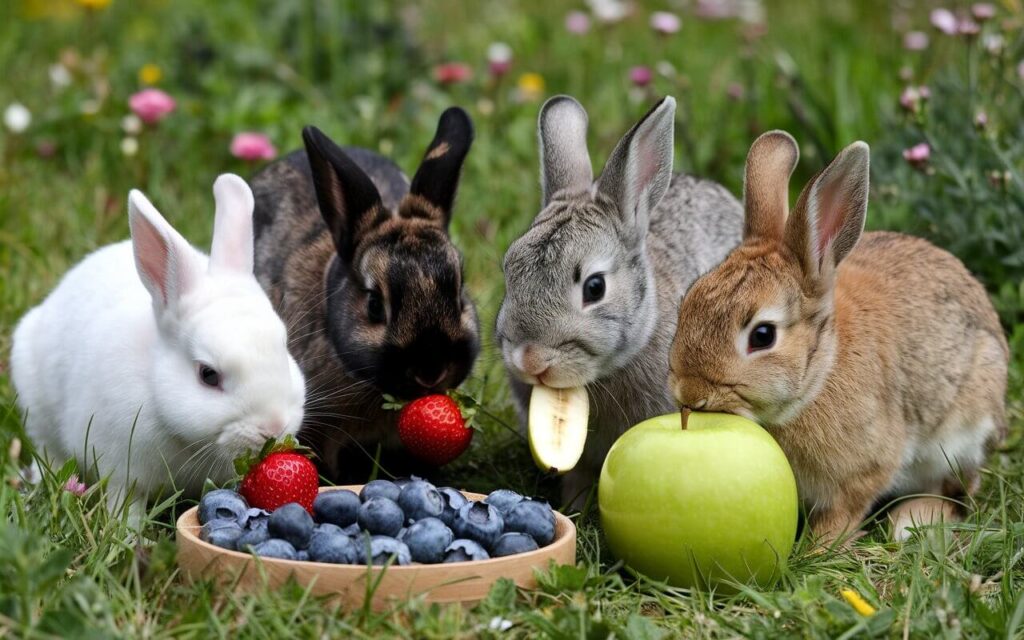
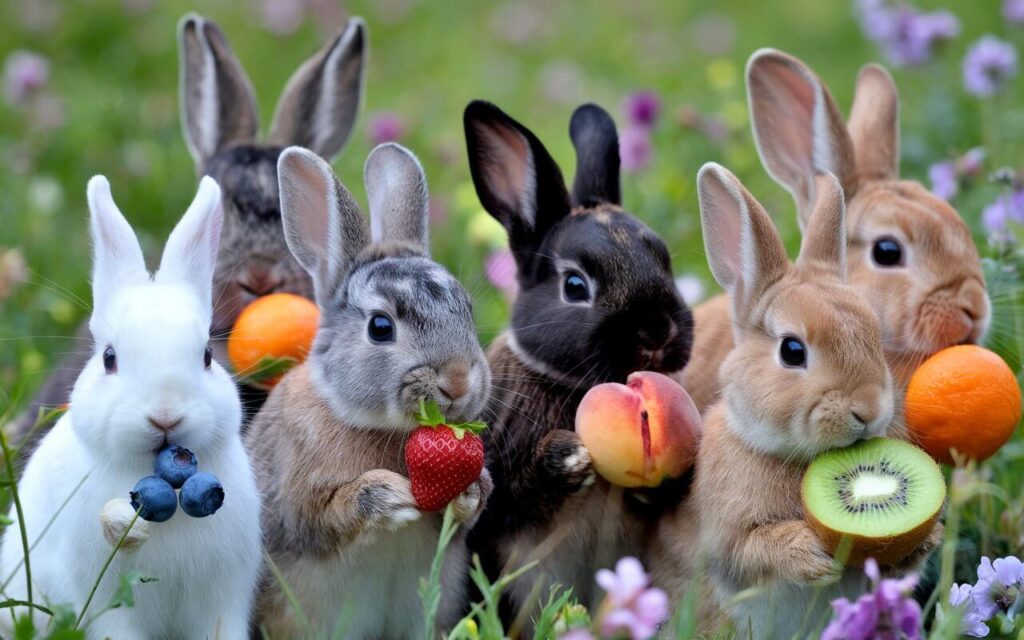

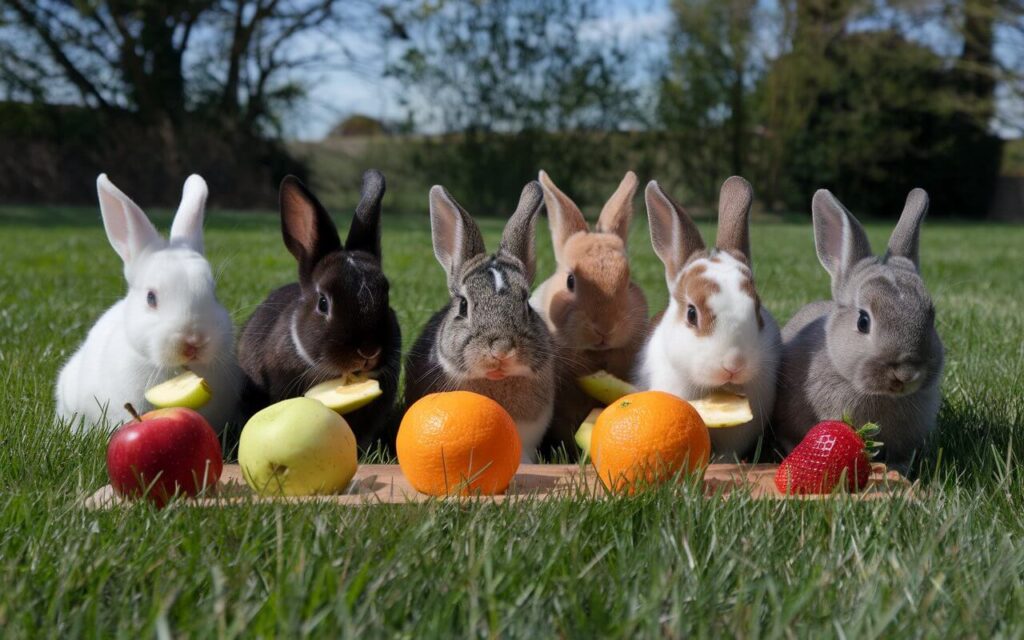

Leave a Reply